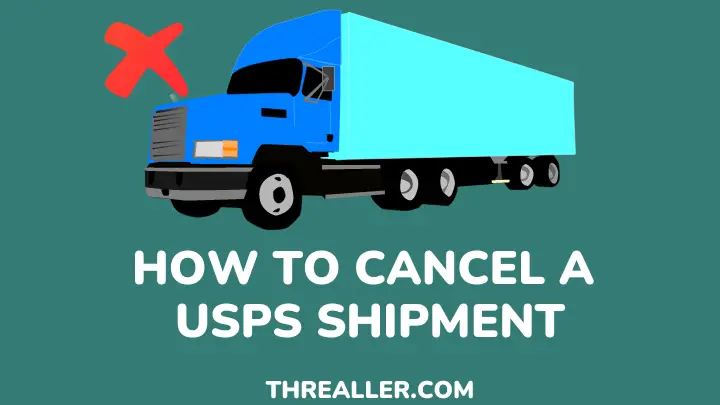It is quite normal to have second thoughts after sending a package and in some cases, mistakes are made by the sender and packages are mixed up. As a result, you might be wondering whether you can cancel a USPS shipment.
Well, the USPS has no official option to cancel an order once it has been sent. However, you can intercept such an order using the USPS Package Intercept option.
With this option, you can have the package held at the destination post office, redirected to another address, or sent back to you. However, if the package has already been sent out for delivery from the destination post office, this option is no longer valid.
Let’s see a step-by-step guide on how to cancel a USPS shipment in this article.
Cancelling a USPS shipment
Unfortunately, USPS does not offer a cancellation option for shipments. Nevertheless, you can use the USPS package intercept option to have a package either redirected, held at the destination post office, or sent back to the sender.
That being said, you should note that this process is not always successful. The earlier you use the USPS package intercept option, the better the chances of the shipment being intercepted.
Therefore, it is paramount you use this option as soon as you realise you no longer want the package to be delivered. Furthermore, you should note that this process is not free; it costs around $14 – $16.
How to cancel a USPS shipment
You can use the USPS package intercept to redirect, have your package held, or return back to you. This can be done online on the USPS official website.
Below is a detailed guide to assist you.
Step 1: Verify the package is eligible for an interception
Not all packages are eligible for interception. Particularly if the stated package is already out for delivery or is addressed to a commercial mailing receiving agency.
In most cases, the size is also another criterion for eligibility. If the total length and girth of the package are over 108 inches, then it may not be eligible for interception.
You can check if your package is eligible for interception here.
Step 2: Request for shipment to be intercepted
If the package is eligible for the interception, then log into your USPS account and request your shipment be intercepted. It is pretty easy and straightforward.
Step 3: Check the estimated cost
After sending the intercept request, you will be shown an estimate for the interception cost. This includes the cost for interception and any other additional fees if applicable. It should be around $14 – $16.
If the intercept is successful, your credit card will be charged accordingly. Depending on the location of the intercept, the package will be either held at the destination post office or sent back to you.
And if you wish the package to be redirected to another address, you can contact USPS customer care (1-800-275-8777).
FAQs
What is USPS package interception?
The USPS package intercept is a service that allows you to intercept a USPS shipment if it is not out for delivery. After it is intercepted, it is either sent back to the sender or held at the destination post office.
Can you redirect a USPS shipment?
You can redirect a USPS shipment after it has been intercepted successfully. Simply contact USPS customer service and instruct your package to be delivered to a new address.
Do you get charged for intercepting a shipment?
Yes, you do. Once the package has been intercepted successfully, you will be charged accordingly.
Conclusion
Although you may not be able to directly cancel a shipment, you can still stop the shipment from being delivered. This can be done by requesting a USPS package intercept online.
It is a pretty straightforward and hassle-free process. All you need do is confirm the package is eligible for intercept, and if it is, send a request from your USPS account.
If the shipping is successful, you will be charged for the intercept and other additional fees. Once it is intercepted, the shipment will either be sent back to you or held at the destination post office.
If your USPS package interception fails, you can also instruct the receiver to refuse the package on delivery. See this article on how to refuse a package you don’t want for guidance.
Thanks for reading.
